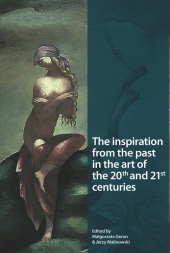The inspiration from the past in the art of the 20th and 21st centuries
eds. Małgorzata Geron, Jerzy Malinowski
The inspiration from the past in the art of the 20th and 21st centuries – the fourth volume of Studies on modern art broadens the scope of analyses of contemporary art. The changes of the philosophy of life resulting from the paradigm of the avant-garde, as well as the forms related to deformation and expression stemming from the category of ugliness, allowed to study therein different relationships with the old art, especially the non-classical as well as non-European one. The issue of inspiration became the essence of the volume: of inspiration by styles and genres, by artists’ ideological attitudes, by artistic technologies. The end of the 18th century was accepted as the caesura of old art, dominated by neo-styles, where the concept of creative work was related to the adaptation of the principles of, among others, classical Greek and Roman, Gothic or Renaissance art to new social and cultural conditions as well as technologies. In the early 20th century, academism became ultimately rejected, however, the relations with the old art remained. The authors attempted to identify these relationships.
The volume is divided into four parts. The first three sections are dedicated to art of the world: architecture, painting, sculpture and graphics of Europe and North America, the art of Asia, Africa and South America. The fourth part is based on different assumptions and concerns the national identification of art in Central Europe (Czech, Lithuanian, Polish and Jewish).
